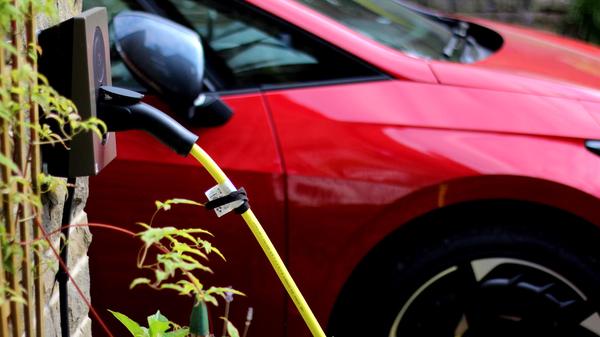Feature
Getting a home EV charger installed
Home charging is the key to unlocking the full potential in any electric vehicle – here’s how to set yourself up
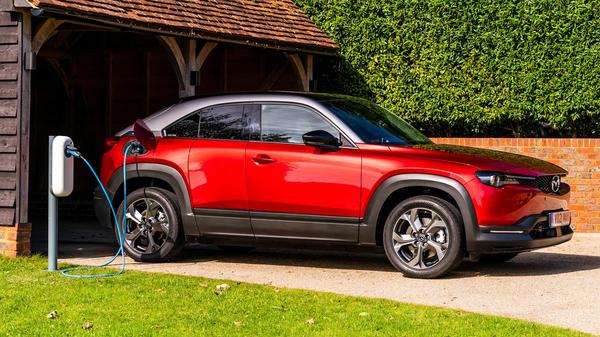

Words by: Dan Trent

Additional words by: Andrew Woodhouse
Last updated on 20 November 2023 | 0 min read
There are lots of reasons to want an electric car, ranging from the swift and silent performance to the social responsibility bit of reduced local emissions and switch away from fossil-fuelled vehicles. As the cost of living continues to rise the potential to slash personal transport costs compared with an internal combustion engine (ICE) vehicle is, of course, a big attraction as well.
While the Plug-in Car Grant (PICG) has ended there are still plenty of financial incentives to help you switch to an electric car, including employee benefits like salary sacrifice schemes and cheaper Benefit In Kind. But once you’ve got that electric car the running costs will be the real focus, and where home charging really comes into play. Put it this way – depending where you plug in public chargers can work out just as expensive as petrol or diesel. Charge at home and take advantage of off-peak energy tariffs you could ‘fuel’ your car overnight for little more than the price of a fancy coffee. Installing a home charger isn’t cheap, and can add around £1,000 to the ‘set-up costs’ of switching to an electric car now that government grants are ending for most private properties, though some remain in Scotland. Some manufacturers include charger installation with offers when buying an EV, but if you are having to go it alone it can be a confusing market. Read on for what we learned going through the process ourselves, and what you need to know. Skip to: Can I have a charger installed? How much does a home charger cost? What charger do I need? How do I get a charger installed? Conclusions
While the Plug-in Car Grant (PICG) has ended there are still plenty of financial incentives to help you switch to an electric car, including employee benefits like salary sacrifice schemes and cheaper Benefit In Kind. But once you’ve got that electric car the running costs will be the real focus, and where home charging really comes into play. Put it this way – depending where you plug in public chargers can work out just as expensive as petrol or diesel. Charge at home and take advantage of off-peak energy tariffs you could ‘fuel’ your car overnight for little more than the price of a fancy coffee. Installing a home charger isn’t cheap, and can add around £1,000 to the ‘set-up costs’ of switching to an electric car now that government grants are ending for most private properties, though some remain in Scotland. Some manufacturers include charger installation with offers when buying an EV, but if you are having to go it alone it can be a confusing market. Read on for what we learned going through the process ourselves, and what you need to know. Skip to: Can I have a charger installed? How much does a home charger cost? What charger do I need? How do I get a charger installed? Conclusions
Can I have a charger installed?
This obviously depends where you live. If you are lucky enough to have a driveway or off-street parking on your property then it should be relatively straightforward. If you live in a flat, apartment or other form of shared accommodation it may still be possible if that includes allocated parking, but you should consult your landlord, letting agent or building manager first. If you have to depend on on-street parking it gets more difficult and you may have to depend on the public network, on the basis domestic plug sockets and extension leads aren’t appropriate for charging electric cars and you shouldn’t be trailing cables over pavements.
If you do live somewhere compatible with having a charging point it should in theory be a relatively straightforward process of having a professional installer connect it to your domestic electricity supply. Back to top
If you do live somewhere compatible with having a charging point it should in theory be a relatively straightforward process of having a professional installer connect it to your domestic electricity supply. Back to top
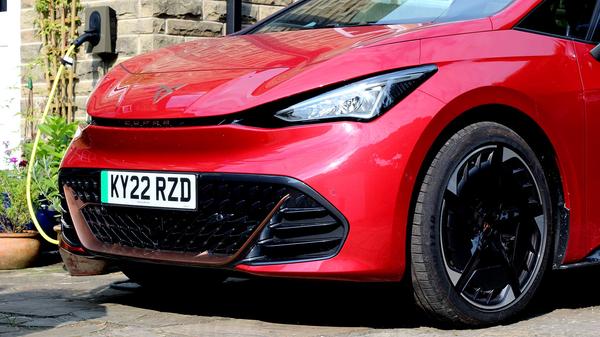
How much does a home charger cost?
This depends on the charger you go for (see ‘What charger do I need?’) and who you choose to fit it, but the going rate if you no longer qualify for the Government grant (or live outside Scotland) will likely be around £1,000 installed. If you do still get the grant the installer can knock £350 off that price but, either way, it’s a fair sum of money to be paying upfront. So-called ‘untethered’ chargers that you plug into with a dedicated charging lead can be cheaper, though if your car doesn’t come with its own cable you’ll have to budget as much as £200 extra to get one.
Chargers themselves vary in cost from about £500 to around double that but it can be hard to shop around, because many suppliers make you commit to the purchase upfront. Independent installers may be more flexible and willing to discuss your particular needs so if you prefer this route ask around friends and family who already run electric cars for any recommendations or put a shout out on social media and you’re bound to get advice from other EV owners in your area. Another option to consider is a subscription-based installation, which works like your mobile phone contract or car finance. Egg is one company offering a service along these lines, with a fixed monthly cost that includes installation and support. If you live in a flat (either renting or owning) or rent a property then you can apply for a £350 contribution towards the cost of a charging point or 75 per cent off the cost of the charge point, whichever is the lowest amount. You’ll need access to off-road parking to apply, details are available here. Landlords can apply for this grant for up to 200 residential properties a year, and 100 commercial properties a year. They can also apply for up to £30,000 - or 75 per cent off - the cost of infrastructure and building work to fit multiple charging points, whichever is lower. Back to top
Chargers themselves vary in cost from about £500 to around double that but it can be hard to shop around, because many suppliers make you commit to the purchase upfront. Independent installers may be more flexible and willing to discuss your particular needs so if you prefer this route ask around friends and family who already run electric cars for any recommendations or put a shout out on social media and you’re bound to get advice from other EV owners in your area. Another option to consider is a subscription-based installation, which works like your mobile phone contract or car finance. Egg is one company offering a service along these lines, with a fixed monthly cost that includes installation and support. If you live in a flat (either renting or owning) or rent a property then you can apply for a £350 contribution towards the cost of a charging point or 75 per cent off the cost of the charge point, whichever is the lowest amount. You’ll need access to off-road parking to apply, details are available here. Landlords can apply for this grant for up to 200 residential properties a year, and 100 commercial properties a year. They can also apply for up to £30,000 - or 75 per cent off - the cost of infrastructure and building work to fit multiple charging points, whichever is lower. Back to top
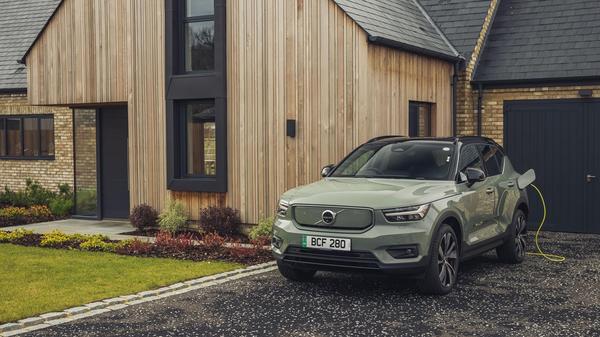
What charger do I need?
The main advantages of a dedicated home EV charging point over simply plugging into the mains are safety and speed of charging. Safety on the basis a charging point and the supporting hardware are all designed to handle the demands an electric car puts on them, and speed because it can charge your battery much faster.
Put simply a domestic socket’s 3.5kW output would take nearly nine hours to add 30kWh to your battery, which is enough to charge the battery of, say, a small electric car like a Honda E from near ‘empty’. But most dedicated home charging points deliver 7.5kW, which would slash your charging time to four hours. This is both convenient and helps save you money, given your window for charging at off-peak rates is typically just five or so hours in the middle of the night. Some home chargers can go as fast as 22kW, which will be attractive if your electric car is compatible and has a bigger battery, like those found in performance or premium models like the Porsche Taycan or BMW iX. But this depends on having what’s known as a three-phase supply to your house, which is rare in the UK, even in new-build properties. Choosing a charger therefore comes down to knowing the power output you want, the look of it and whether you want additional features like connected charging that you can manage remotely from a phone app or similar. Like anything, cheaper chargers are more basic while premium devices will be neater and have more functionality. Reliability is also an important consideration and independent installers have a vested interest in only offering units that are dependable, based on their own experience. Talking to them, and other EV owners, is a good way to refine your choice of brand. The other main thing to decide is whether you want a tethered or untethered charger. Tethered means there is a cable permanently attached to the charger and you simply unhook it and plug it into the car when you get home. This is obviously more appealing than having to rummage around in the boot for your cable but means a bulkier unit on the side of your house and can be more expensive. Need a hand choosing the right home charger? Using Autotrader’s handy new EV charging tool, you can compare all of the EV home charging points that are suitable for your vehicle, from all of the best home charging point brands. Simply type in your registration, answer a few quick questions and you're done! Some options allow you to see how it would look in your home via augmented reality, so you can check how it’ll look once installed for your own peace of mind. Back to top
Put simply a domestic socket’s 3.5kW output would take nearly nine hours to add 30kWh to your battery, which is enough to charge the battery of, say, a small electric car like a Honda E from near ‘empty’. But most dedicated home charging points deliver 7.5kW, which would slash your charging time to four hours. This is both convenient and helps save you money, given your window for charging at off-peak rates is typically just five or so hours in the middle of the night. Some home chargers can go as fast as 22kW, which will be attractive if your electric car is compatible and has a bigger battery, like those found in performance or premium models like the Porsche Taycan or BMW iX. But this depends on having what’s known as a three-phase supply to your house, which is rare in the UK, even in new-build properties. Choosing a charger therefore comes down to knowing the power output you want, the look of it and whether you want additional features like connected charging that you can manage remotely from a phone app or similar. Like anything, cheaper chargers are more basic while premium devices will be neater and have more functionality. Reliability is also an important consideration and independent installers have a vested interest in only offering units that are dependable, based on their own experience. Talking to them, and other EV owners, is a good way to refine your choice of brand. The other main thing to decide is whether you want a tethered or untethered charger. Tethered means there is a cable permanently attached to the charger and you simply unhook it and plug it into the car when you get home. This is obviously more appealing than having to rummage around in the boot for your cable but means a bulkier unit on the side of your house and can be more expensive. Need a hand choosing the right home charger? Using Autotrader’s handy new EV charging tool, you can compare all of the EV home charging points that are suitable for your vehicle, from all of the best home charging point brands. Simply type in your registration, answer a few quick questions and you're done! Some options allow you to see how it would look in your home via augmented reality, so you can check how it’ll look once installed for your own peace of mind. Back to top
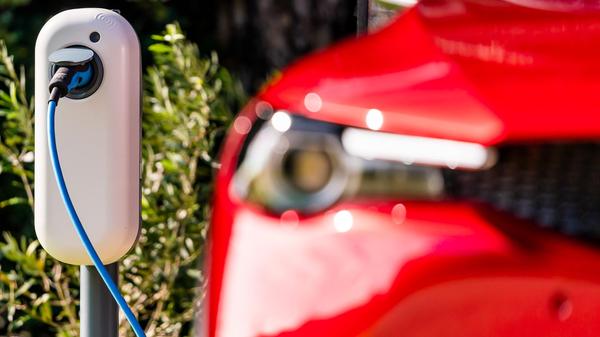
How do I get a charger installed?
Having figured out what charger you want you then choose your installer. Normally you’d shop around first, see who has the best deals, find out when they can do the job and discuss any special needs you may have, as you might have with an older property like the one we used in this example. Unfortunately a lot of the big names like PodPoint, BP Pulse, Scottish Power and others insist on you paying upfront – potentially a four-figure sum – before they’ll even talk to you.
If you don’t like the sound of that there are plenty of independent installers as well, who may offer a wider range of chargers and be more open about when they can visit and whether there are likely to be any additional costs. Whoever you deal with most conversations start online and, before the installer comes to your property, you will probably be asked to conduct a basic survey so they know what to expect. Our installation of a Zaptec charger meant emailing pictures of the home fusebox, electricity meter and other utilities and a floorplan with some basic measurements. If you’ve still got the estate agent’s listing from when you bought the house that will likely have this already and save you time. The technicalities of how the installation attaches to your existing supply will depend on the set-up at your home but, simply speaking, involves fixing the charger to an exterior wall (or inside your garage) and then connecting it to your mains supply with the necessary cabling and fuses. Suffice to say, this is a job for professional electricians and not DIY enthusiasts. If the charging point is fixing to the outside rather than within an integrated garage the cable will, by one means or another, need to get from inside to outside, so the installer may have to drill a hole in the exterior wall to route the cable. They will, of course, be well used to this kind of work and the survey you sent previously helps them plan this before they arrive. You will end up with some cabling running along the outside of the house to the charging point but any skilled installer should be able to do this neatly, and smaller charging points like the Zaptec we chose can be very discreet compared with the big public chargers you may have seen. All being well most installations take half a day and you’ll need to be on hand while the work is done. Back to top
If you don’t like the sound of that there are plenty of independent installers as well, who may offer a wider range of chargers and be more open about when they can visit and whether there are likely to be any additional costs. Whoever you deal with most conversations start online and, before the installer comes to your property, you will probably be asked to conduct a basic survey so they know what to expect. Our installation of a Zaptec charger meant emailing pictures of the home fusebox, electricity meter and other utilities and a floorplan with some basic measurements. If you’ve still got the estate agent’s listing from when you bought the house that will likely have this already and save you time. The technicalities of how the installation attaches to your existing supply will depend on the set-up at your home but, simply speaking, involves fixing the charger to an exterior wall (or inside your garage) and then connecting it to your mains supply with the necessary cabling and fuses. Suffice to say, this is a job for professional electricians and not DIY enthusiasts. If the charging point is fixing to the outside rather than within an integrated garage the cable will, by one means or another, need to get from inside to outside, so the installer may have to drill a hole in the exterior wall to route the cable. They will, of course, be well used to this kind of work and the survey you sent previously helps them plan this before they arrive. You will end up with some cabling running along the outside of the house to the charging point but any skilled installer should be able to do this neatly, and smaller charging points like the Zaptec we chose can be very discreet compared with the big public chargers you may have seen. All being well most installations take half a day and you’ll need to be on hand while the work is done. Back to top
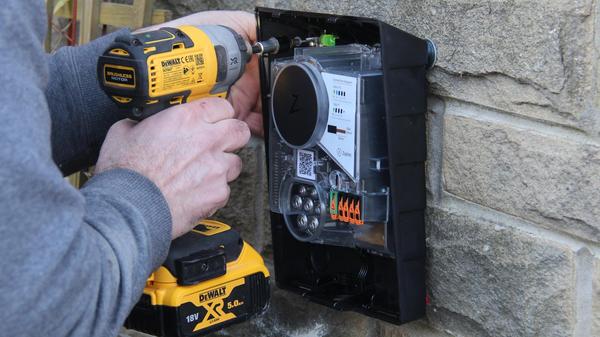
Conclusions
Like choosing broadband, a TV subscription package or your utility supplier getting an electric car charging point installed on your house is simply another part of modern domestic life but one, hopefully, you’ll only need to do once. Like any such expense unless an installation is already included with the purchase of your new electric car it pays to shop around and do your research before committing, though the way the market works doesn’t always make this easy.
There are advantages in scale, price and the reassurance of going with a recognised name with the big suppliers but, in our experience, independents seem more flexible and willing to discuss options if you think your installation may have some additional complexities involved, or you have a particular need. Once it’s done it’s done, though, and from that point on you can hopefully enjoy the many benefits in cost and convenience from being able to ‘fuel’ your car at home and start every journey with a full charge. Back to top
There are advantages in scale, price and the reassurance of going with a recognised name with the big suppliers but, in our experience, independents seem more flexible and willing to discuss options if you think your installation may have some additional complexities involved, or you have a particular need. Once it’s done it’s done, though, and from that point on you can hopefully enjoy the many benefits in cost and convenience from being able to ‘fuel’ your car at home and start every journey with a full charge. Back to top
